Lombardy (or Milanesi) pattern
The origins of the Lombardy pattern probably lie in the early 19th century when it was a full-length design. It has some affinities with the French Provence and Lyons patterns which are now obsolete.
The origins of the Lombardy pattern, also referred to as Milanesi, probably lie in the early 19th century when it was a full-length design. Nowadays it is invariably double-ended. This pattern is also known in Ticinese in Italian speaking Switzerland which, until 1803, was part of the Duchy of Milan. The cards are French-suited, elongated and narrow, and their design is reminiscent of several used in eighteenth century south and south-eastern France (i.e. Provence and Lyons patterns which are now obsolete).
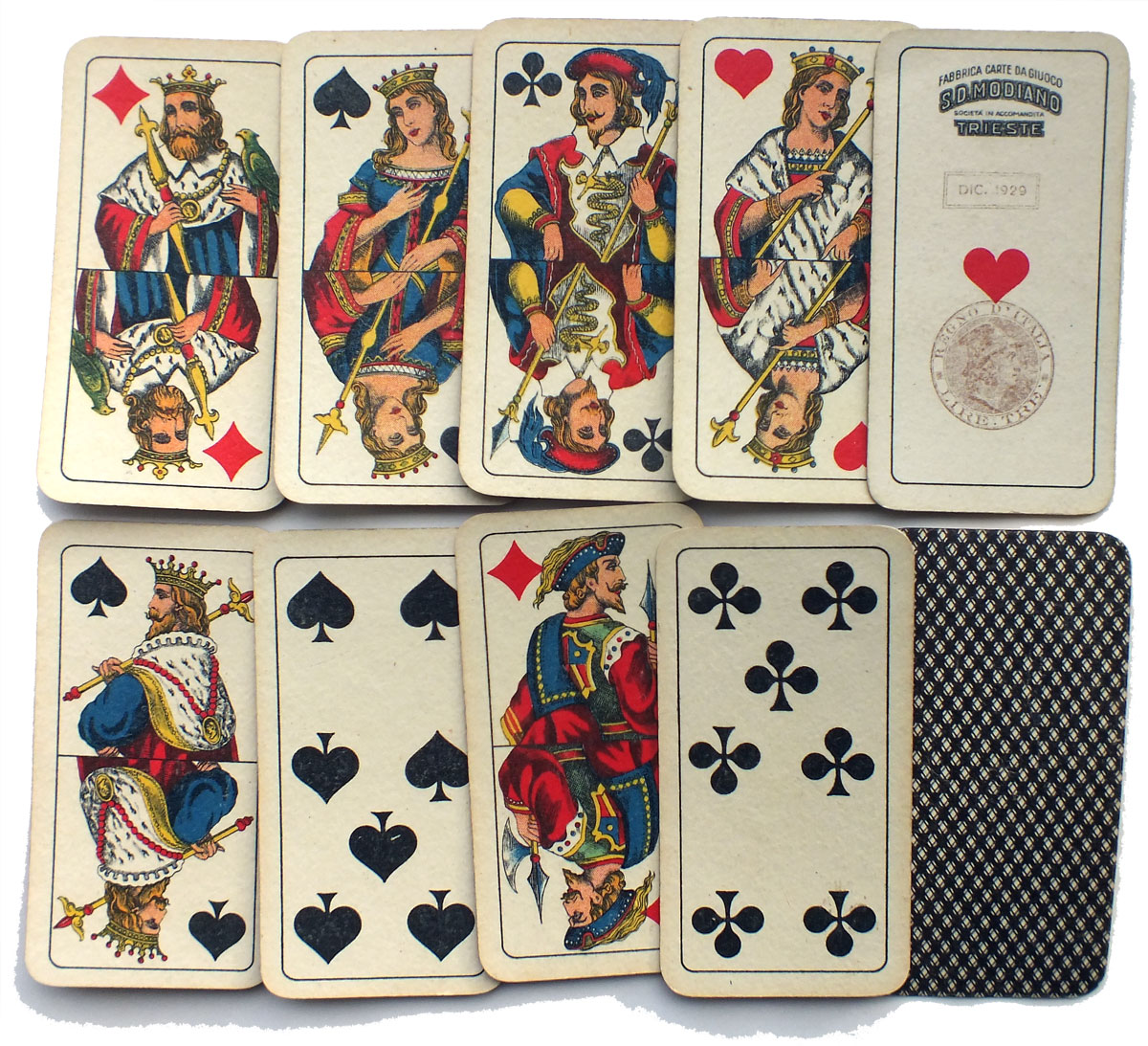
Above: double-ended Lombard pattern pack by S.D. Modiano, c.1929. 40 cards A - 7, J, Q, K. "Regno D'Italia - Lire Tre" tax stamp "Dic. 1929" on Ace or Hearts.
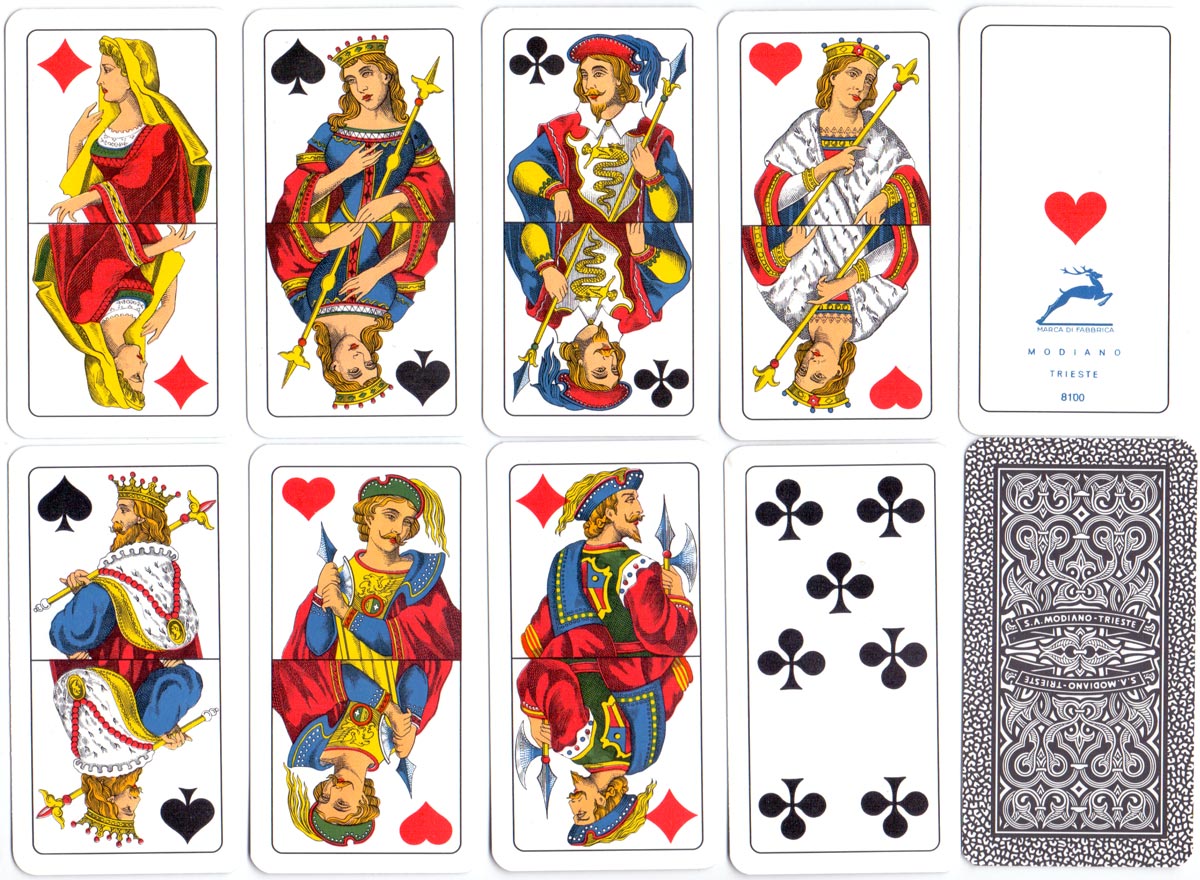
Above: Lombardy pattern by Modiano, Trieste, c.1981 (essentially unchanged from the example shown above).
Also known as Milanesi pattern
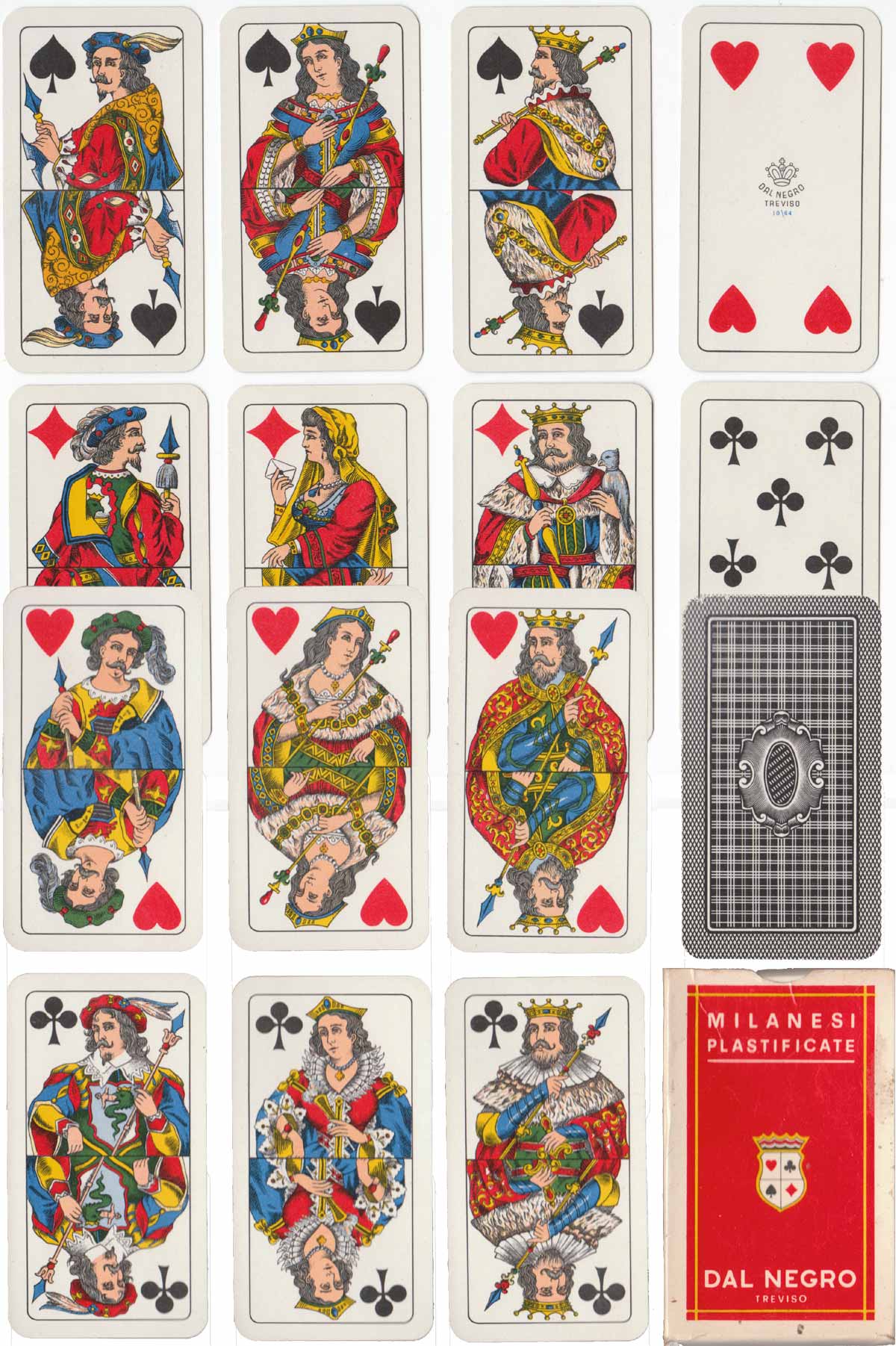
Above: Milanesi pattern by Dal Negro. Images courtesy Rex Pitts.
The pack has never had indices. The example shown below is from an uncut sheet by Edoardo Pignalosa, c.1952.
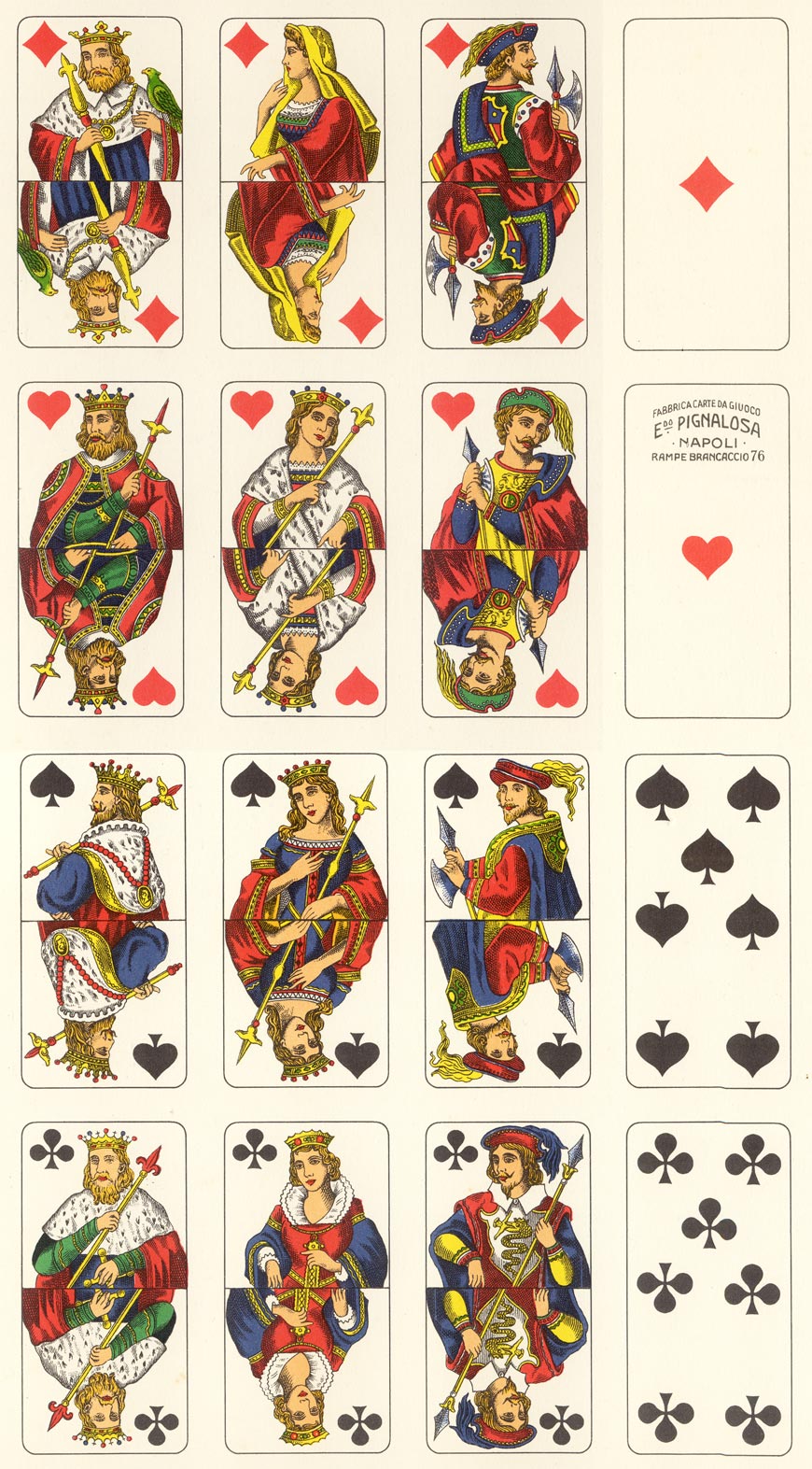

By Rex Pitts (1940-2021)
Member since January 30, 2009
Rex's main interest was in card games, because, he said, they were cheap and easy to get hold of in his early days of collecting. He is well known for his extensive knowledge of Pepys games and his book is on the bookshelves of many.
His other interest was non-standard playing cards. He also had collections of sheet music, music CDs, models of London buses, London Transport timetables and maps and other objects that intrigued him.
Rex had a chequered career at school. He was expelled twice, on one occasion for smoking! Despite this he trained as a radio engineer and worked for the BBC in the World Service.
Later he moved into sales and worked for a firm that made all kinds of packaging, a job he enjoyed until his retirement. He became an expert on boxes and would always investigate those that held his cards. He could always recognize a box made for Pepys, which were the same as those of Alf Cooke’s Universal Playing Card Company, who printed the card games. This interest changed into an ability to make and mend boxes, which he did with great dexterity. He loved this kind of handicraft work.
His dexterity of hand and eye soon led to his making card games of his own design. He spent hours and hours carefully cutting them out and colouring them by hand.
Trending Articles
Popular articles from the past 28 days
Related Articles
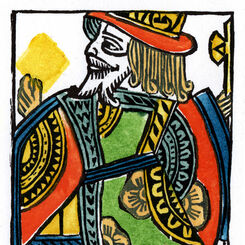
Woodblock and Stencil King of Diamonds
A limited edition art print of the King of Diamonds 1984 woodblock joker.
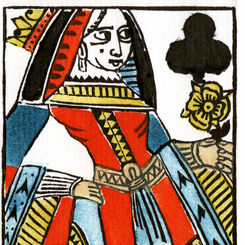
Woodblock and Stencil Queen of Clubs
A limited edition art print of the Queen of Clubs 1984 woodblock joker.
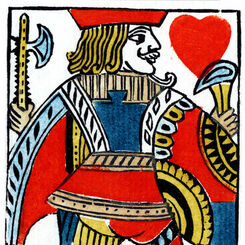
Woodblock and Stencil Jack of Hearts
A limited edition art print of the Jack of Hearts 1984 woodblock joker.
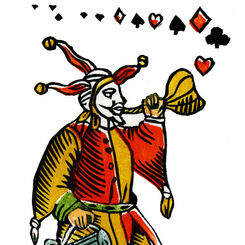
Woodblock and Stencil Joker
A limited edition art print of the 1984 woodblock joker.
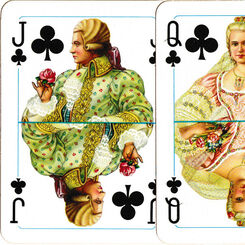
Poker Lusso
Richly costumed courts on a luxury poker pack from Masenghini.
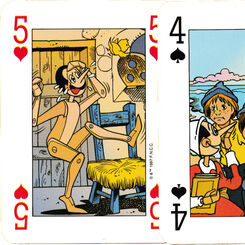
Pinocchio playing cards
Comic book drawings inspired by Carlo Collodi’s children’s classic, Pinocchio.
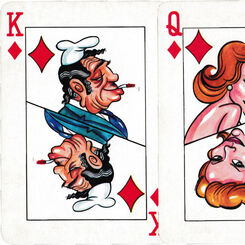
Le Ore playing cards
Caricatures of famous personalities from the late 1970s for the Italian magazine Le Ore.
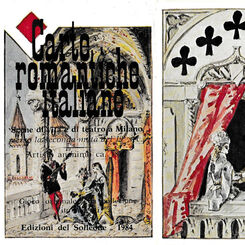
Carte Romantiche Italiane
Scenes of life and the theatre in Milan towards the second half of the 19th century.
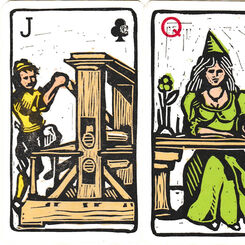
Lo Stampatore
‘Lo Stampatore’ linocut images created by Sergio Favret, published as a deck of cards by Editions So...
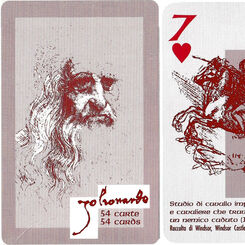
Leonardo collection
Leonardo collection playing cards with drawings from his notebooks.
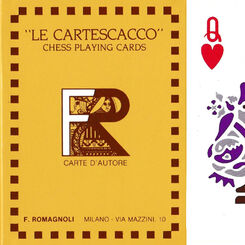
Lo Cartescacco / Chess playing cards
Playing cards designed by F. Romagnoli bringing together Chess and Bridge, Italy, c. 1981.
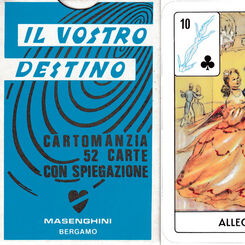
Il Vostro Destino
Italian fortune-telling pack produced by Viassone and later by Masenghini.
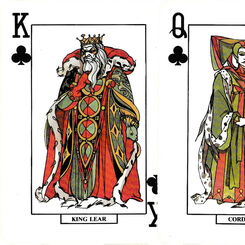
San Paolo Shakespeare
San Paolo Shakespeare, Italy, 1978

Le Carte di Forattini
Political caricatures by Giorgio Forattini published by Arnoldo Mondadori Editore, Italy, 1993.
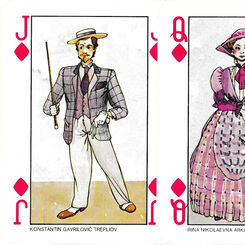
San Paolo Chekhov
Characters from Chekhov’s plays designed by Paolo Fresu for San Paolo Istituto Bancario, Italy, c.19...
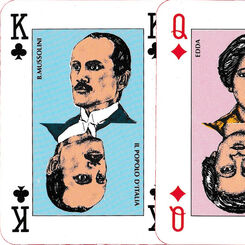
Storia del Fascismo - gioco di carte
‘Storia del Fascismo’ playing cards depicting persons, symbols and artifacts associated with Italian...
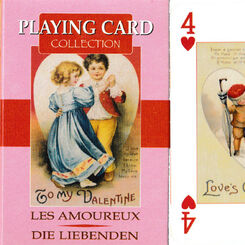
The Lovers playing cards
Reproductions of old postcards with romantic messages for Valentine’s Day.
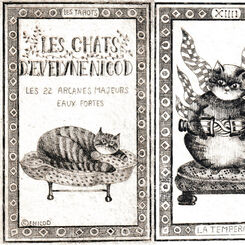
I Gatti Originali di Evelyne Nicod
Etchings of cats on a set of major arcana created by Evelyne Nicod.
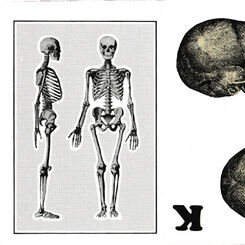
Carte Osteologiche
Skulls and bones of all descriptions have become the suits and pips in this 40-card pack from Italy....
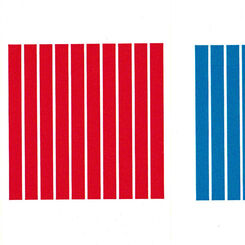
Marcello Morandini
Modern designs by Italian artist Marcello Morandini using the simplest of forms and colours.
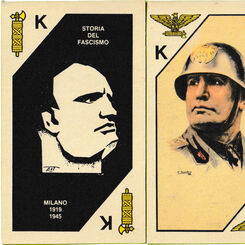
Storia del Fascismo
Published by Il Meneghello, this pack provides a visual history of Fascism in Italy between 1919 and...
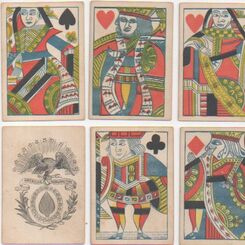
75: Early American cards
An overview of some of the early cards made in the United States.
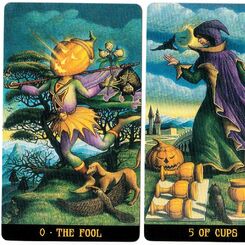
Jack-O’-Lantern Tarot
Giuliano Costa's Jack-O’-Lantern tarot blends Rider-Waite symbolism with the rich and atmospheric th...
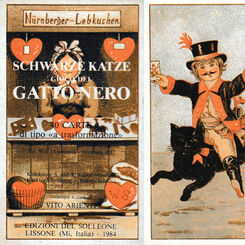
Schwarze Katze (or Gioco del Gatto Nero)
Reproduction of a 40-card transformation pack with designs by “WS”, adapted for the game of Black Ca...
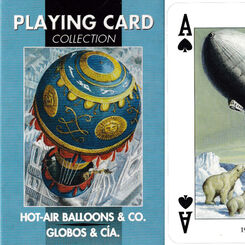
Hot-Air Balloons & Co.
Hot-air balloons and airships from the early days to 1988, with designs by S. Baraldi and F. Tacconi...
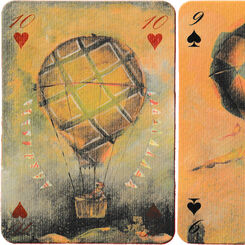
Carte da Gioco Mongolfiere
Various hot-air balloons on a pack from a small Florentine publisher.
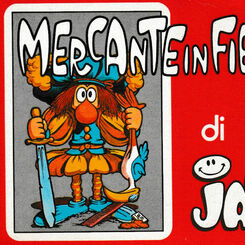
Mercante in Fiera di Jacovitti
Traditional Italian card game with comic designs by Benito Jacovitti.
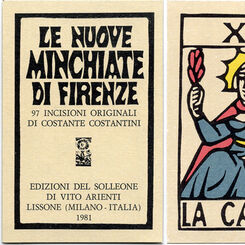
Le Nuove Minchiate di Firenze
Costante Costantini's second Minchiate deck, “Le Nuove Minchiate di Firenze”, was published by Solle...

Bolognese pattern
Standard Bolognese pattern pack by Murari of Bari.
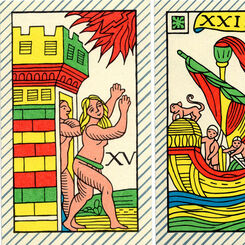
Minchiate Fiorentine
Minchiate Fiorentine created by Costante Costantini, published by Edizioni del Solleone.
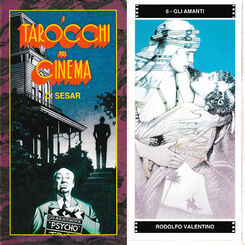
I Tarocchi del Cinema (di Sesar)
A set of Tarot trumps on the subject of the cinema, with designs by Sergio Sarri.
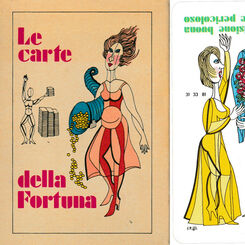
Le carte della Fortuna
Modern Italian fortune-telling pack from 1975, with designs by Sergio Ruffolo.
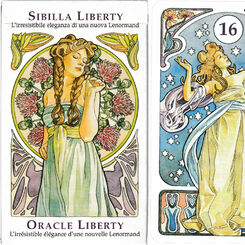
Art Nouveau Oracle
A Lenormand-type fortune-telling pack in the Art Nouveau style.
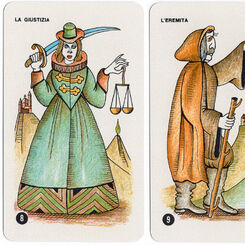
Tarocco Indovino
Sergio Ruffolo’s “Tarocco Indovino” is an expanded version of his “Lo Zodiaco” cartomancy deck.
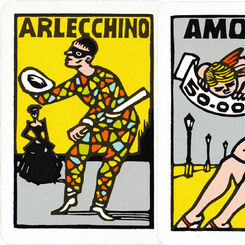
Il Mercante in Fiera del Solleone
Traditional Italian card game with bold designs by Costante Costantini.
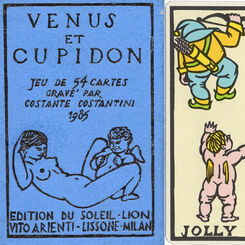
Venus et Cupidon
“Venus et Cupidon” from Costante Costantini in his distinctive woodcut style.
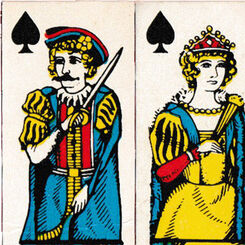
Italia playing cards
Small, narrow cards designed by Osvaldo Menegazzi, bearing a strong resemblance to a Swedish pattern...
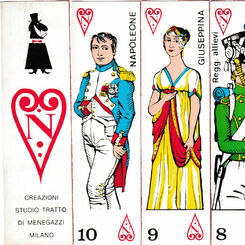
Napoleone playing cards
Long, narrow cards designed by Osvaldo Menegazzi, featuring Napoleon, Josephine and various soldiers...
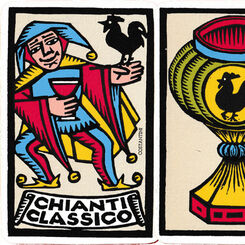
Consorzio Vino Chianti Classico
Promotional pack for Chianti Classico wine, with designs by Costante Costantini.
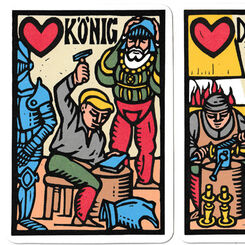
Burgdorf Abschreckhärtetechnik
Promotional pack for a German steel hardening business, with designs by Costante Costantini.
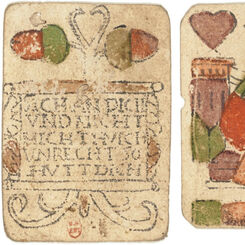
Early German playing cards
Some early examples of popular German playing cards from the XV and XVI centuries.
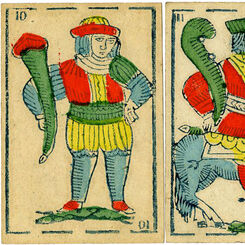
P. Buscaglia: Spanish-suited cards
Spanish-suited cards published by P. Buscaglia, Mele & Genova.
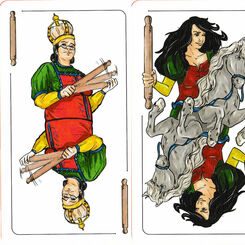
Carte Bolognesi
New designs reinforcing Bologna’s reputation as the gastronomic capital of Italy.
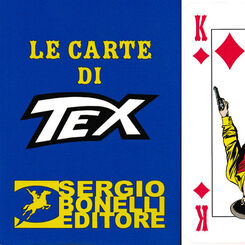
Le carte di Tex
Characters from the famous Italian comic book series, Tex, created by Gian Luigi Bonelli and Aurelio...


